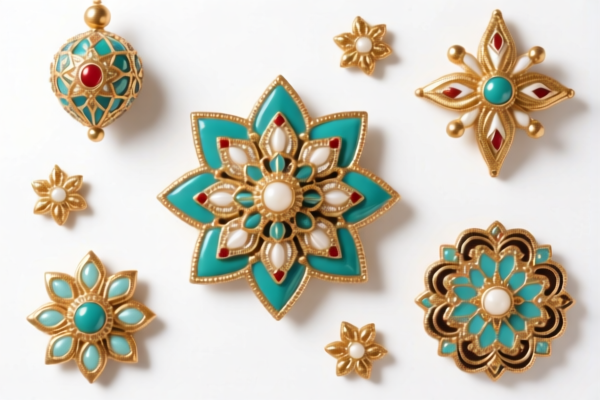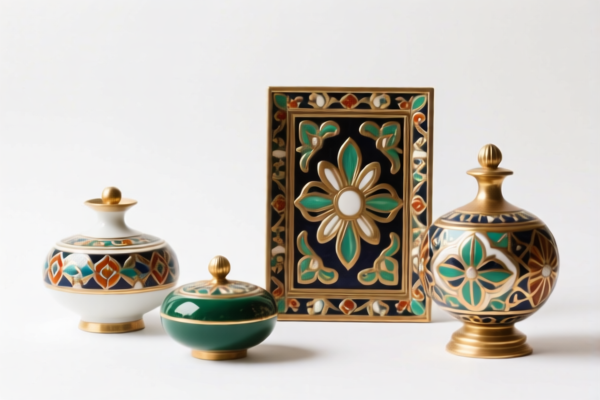| HS Code | Official Doc | Tariff Rate | Origin | Destination | Effective Date |
|---|---|---|---|---|---|
| 7326908688 | Doc | 82.9% | CN | US | 2025-05-12 |
| 7326908605 | Doc | 82.9% | CN | US | 2025-05-12 |
| 7323999080 | Doc | 83.4% | CN | US | 2025-05-12 |
| 8306100000 | Doc | 35.8% | CN | US | 2025-05-12 |
| 8306290000 | Doc | 30.0% | CN | US | 2025-05-12 |
| 8302416015 | Doc | 83.9% | CN | US | 2025-05-12 |
| 8302419080 | Doc | 58.5% | CN | US | 2025-05-12 |
| 8304000000 | Doc | 33.9% | CN | US | 2025-05-12 |
| 9403999061 | Doc | 55.0% | CN | US | 2025-05-12 |
| 8310000000 | Doc | 55.0% | CN | US | 2025-05-12 |
| 9405114010 | Doc | 58.9% | CN | US | 2025-05-12 |
| 9405114020 | Doc | 58.9% | CN | US | 2025-05-12 |
| 7418100002 | Doc | 40.5% | CN | US | 2025-05-12 |
| 7418100025 | Doc | 40.5% | CN | US | 2025-05-12 |
| 7419800900 | Doc | 58.0% | CN | US | 2025-05-12 |
| 7419805050 | Doc | 55.0% | CN | US | 2025-05-12 |
| 3926400010 | Doc | 35.3% | CN | US | 2025-05-12 |
| 3926909989 | Doc | 42.8% | CN | US | 2025-05-12 |
| 3924104000 | Doc | 33.4% | CN | US | 2025-05-12 |
| 3924905650 | Doc | 40.9% | CN | US | 2025-05-12 |




Decorative Fittings
Decorative fittings are non-structural elements added to objects – typically furniture, doors, windows, and architectural components – primarily to enhance their aesthetic appearance. They serve little to no functional purpose beyond ornamentation, though some may offer limited protection or conceal joins.
Materials
A wide range of materials are employed in the creation of decorative fittings, chosen for their visual qualities, workability, and cost. Common materials include:
- Metals: Brass, bronze, iron, steel, silver, gold, and alloys are frequently used for their durability, ability to be cast or forged into intricate shapes, and potential for polishing and plating.
- Wood: Carved wood is a traditional choice, offering warmth and a natural aesthetic. Various wood species are employed, from softwoods like pine to hardwoods like oak and mahogany.
- Plastics: Acrylic, polystyrene, and other plastics provide cost-effective alternatives, allowing for complex designs through molding and extrusion.
- Glass & Ceramics: Used for beads, knobs, and inlays, offering color, translucency, and a refined appearance.
- Stone & Shell: Mother-of-pearl, semi-precious stones, and carved stone are used for inlay, accents, and occasionally larger decorative elements.
- Fabric & Leather: Used for upholstery details, pulls, and wrapping around fittings.
Purpose
The primary purpose of decorative fittings is aesthetic enhancement. They contribute to:
- Style: Fittings define and reinforce a specific style (e.g., Victorian, Art Deco, minimalist).
- Value: They can increase the perceived value and desirability of an object.
- Personalization: Fittings allow for customization and reflect the owner's taste.
- Historical Accuracy: In restoration projects, accurate fittings are crucial for maintaining authenticity.
Function (Limited)
While largely non-functional, some fittings may:
- Conceal Fasteners: Rose plates on furniture often cover screw holes.
- Provide Grip: Knobs and pulls facilitate opening and closing.
- Protect Edges: Corner protectors, though decorative, can prevent wear.
Usage Scenarios
- Furniture: Handles, pulls, knobs, escutcheons, corner brackets, carvings, inlays.
- Doors & Windows: Hinges (decorative styles), door knobs, escutcheons, latches, window latches, stained glass details.
- Architectural Elements: Cornices, moldings, rosettes, brackets, finials, decorative panels, railings.
- Lighting: Finials, shades, bases, decorative chains.
- Boxes & Containers: Clasps, hinges, corner protectors, decorative inlays.
Common Types
- Knobs & Pulls: Used on drawers, doors, and cabinets. Available in a vast array of styles, materials, and sizes.
- Escutcheons: Decorative plates surrounding keyholes or other openings.
- Rosettes: Circular or floral ornaments used to cover screw holes or as standalone decorations.
- Brackets: Support elements with decorative designs.
- Finials: Decorative ornaments used to top posts, lamps, or furniture legs.
- Cornices & Moldings: Decorative horizontal elements used on walls or ceilings.
- Hinges (Decorative): Hinges designed with visible ornamentation.
- Clasps & Latches: Fastening mechanisms with decorative features.
- Inlays: Decorative elements embedded into a surface.
- Beads & Appliques: Small decorative elements attached to surfaces.
Based on the provided information, “decorative fittings” can be classified under several HS codes, depending on the material and specific function. Here's a breakdown:
-
8302416015: This code covers base metal mountings, fittings and similar articles suitable for furniture, doors, staircases, windows, etc. Specifically, it includes mountings, fittings, and similar articles of iron or steel suitable for buildings, such as doorstops, chain door fasteners, door pulls, kick plates, and escutcheons.
- 83: Base metal mountings, fittings and similar articles.
- 02: Base metal mountings, fittings and similar articles suitable for furniture, doors, staircases, windows, blinds, coachwork, saddlery, trunks, chests, caskets or the like.
- 41: Other mountings, fittings and similar articles, and parts thereof, suitable for buildings.
- 60: Of iron or steel, of aluminum or of zinc.
- 15: Suitable for interior and exterior doors (except garage, overhead or sliding doors).
-
8306100000: This code covers bells, gongs and the like, nonelectric, of base metal; statuettes and other ornaments, of base metal; photograph, picture or similar frames, of base metal; mirrors of base metal; and base metal parts thereof. This is applicable if the fittings are ornamental and made of base metal.
- 83: Base metal mountings, fittings and similar articles.
- 06: Bells, gongs and the like, nonelectric, of base metal; statuettes and other ornaments, of base metal.
- 10: Bells, gongs and the like, and parts thereof.
-
8306290000: This code covers statuettes and other ornaments, of base metal. If the fittings are specifically ornaments made of base metal, this code applies.
- 83: Base metal mountings, fittings and similar articles.
- 06: Bells, gongs and the like, nonelectric, of base metal; statuettes and other ornaments, of base metal.
- 29: Statuettes and other ornaments, and parts thereof.
- 00: Other.
-
7419800900: This code covers other articles of copper, specifically cloth (including endless bands), grill and netting, of copper wire; expanded metal of copper. If the fittings are made of copper and fall into these categories, this code is applicable.
- 74: Copper and articles thereof.
- 19: Other articles of copper.
- 80: Other.
- 09: Cloth (including endless bands), grill and netting, of copper wire; expanded metal of copper.
-
3926400010: This code covers other articles of plastics and articles of other materials of headings 3901 to 3914, specifically statuettes and other ornamental articles, bows and similar products for decorative purposes including gift-packaging and the like. If the fittings are made of plastic, this code applies.
- 39: Plastics and articles thereof.
- 26: Other articles of plastics and articles of other materials of headings 3901 to 3914.
- 40: Statuettes and other ornamental articles.
- 00: Other.
- 10: Bows and similar products for decorative purposes including gift-packaging and the like.
Regarding HS code 8302416015, please note the need to verify the material (iron or steel, aluminum, or zinc) and the intended use (suitable for buildings).
Customer Reviews
No reviews yet.